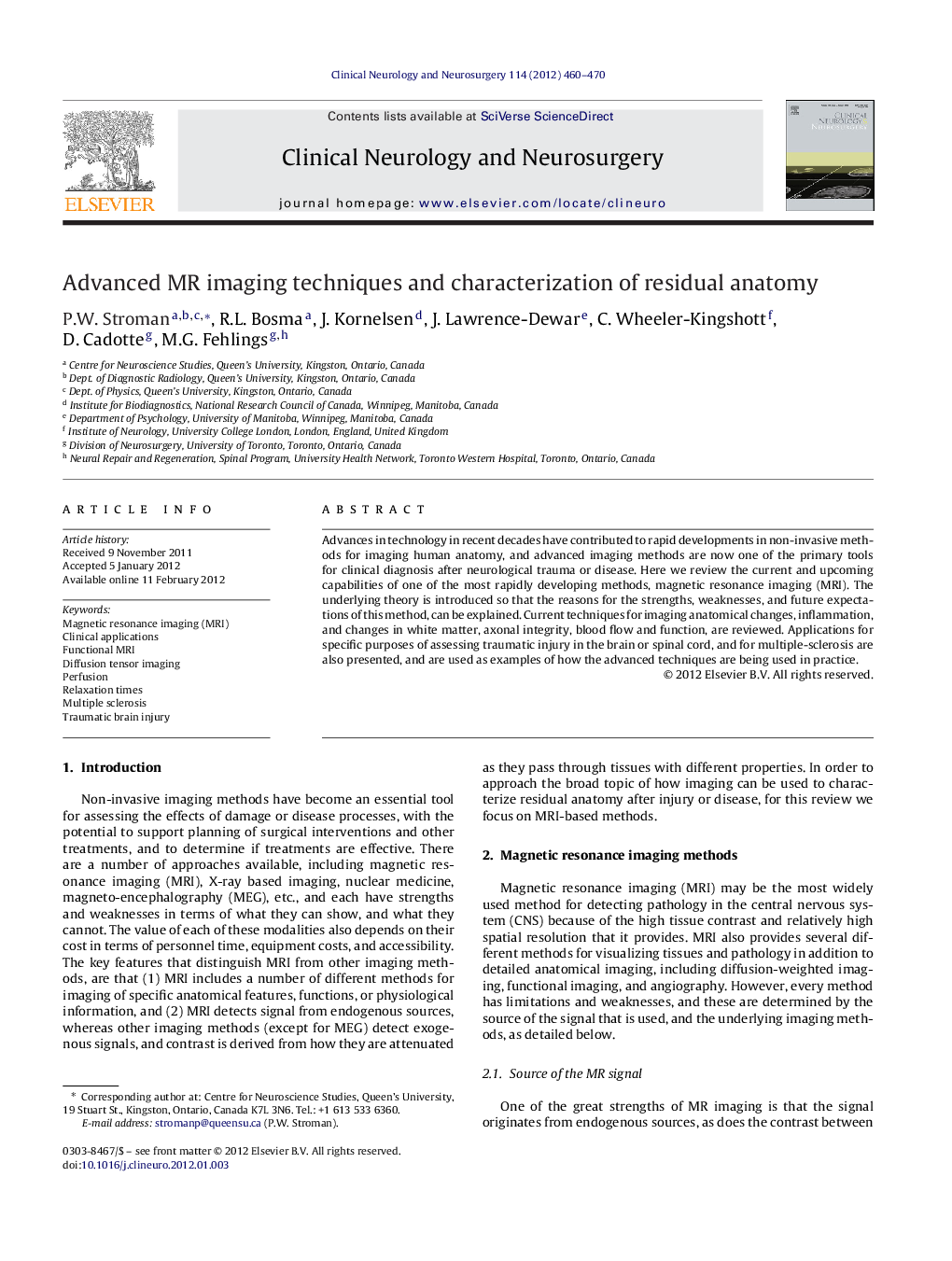| Article ID | Journal | Published Year | Pages | File Type |
|---|---|---|---|---|
| 6007164 | Clinical Neurology and Neurosurgery | 2012 | 11 Pages |
Advances in technology in recent decades have contributed to rapid developments in non-invasive methods for imaging human anatomy, and advanced imaging methods are now one of the primary tools for clinical diagnosis after neurological trauma or disease. Here we review the current and upcoming capabilities of one of the most rapidly developing methods, magnetic resonance imaging (MRI). The underlying theory is introduced so that the reasons for the strengths, weaknesses, and future expectations of this method, can be explained. Current techniques for imaging anatomical changes, inflammation, and changes in white matter, axonal integrity, blood flow and function, are reviewed. Applications for specific purposes of assessing traumatic injury in the brain or spinal cord, and for multiple-sclerosis are also presented, and are used as examples of how the advanced techniques are being used in practice.
